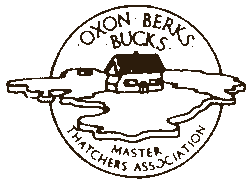Thatched roof maintenance and repairs
Living under a thatched roof is a fantasy for many. As long as you know how to care for your thatch, you can prevent your dream turning into a nightmare.
Good thatch will require frequent maintenance. Establish early on what condition the thatch is in, then appropriate work (if necessary) can be planned. Do not assume that because materials are slipping or that the roof looks a mess, that it necessarily needs re-thatching.
Do not assume that because the roof looks neat (with a good- conditioned ridge pattern) that it is prime condition.
How long will my thatched roof last?
With regular maintenance, your standard thatched roof (consisting of the ridge or uppermost part and the top layer of thatch or coatwork) will last for years, depending on various factors including materials. Water reed tends to last 25-40 years, combed wheat reed for 25-30 years and longstraw 15-25 years. Ridges last around 10-15 years.
How do I maintain my thatched roof?
- Keep a close eye on your thatch, particularly around winter
- Ensure that the thatch can dry well, so remove any trees or vegetation hindering exposure to the sun and wind or preventing rain from running off
- Don’t let anyone damage it by placing ladders against it or walking on it
- Discourage rodents by keeping food (such as bird food) away from the exterior your house
Signs that maintenance is due
- Fixings showing through
- Hollows or lines in the thatch
- Wire netting raised on the ridge
- Net patches under the eaves
- Moss and lichen growing on the thatch
- Flashings (the waterproof strips around chimneys and roof protrusions) coming away
Life of thatch
A thatch which looks thin is not necessarily a good thatch. The life of thatch can be extended significantly by a timely and appropriate repair. Do not move around on your thatch unnecessarily and do not allow others to do so. Do not let non-thatchers fit netting, flashing or anything else without advice from an experienced thatcher. TV aerial erectors etc. should be kept off of thatch as much as possible and please DO NOT allow ridges to be working platforms.
What work will a thatcher carry out to maintain my roof?
Your thatcher may suggest a variety of solutions, from minor repairs or a complete re-thatch, depending on your roof’s condition.
Re-ridging involves removing any wire netting from the ridge, taking out the old materials and adding fresh ridging.
Cement flashing is usually replaced on re-ridging. Lead flashing lasts longer and may not need replacing each time.
‘Dressing up’ when thatch has come away from its fixings can be done after this stage. The thatch will be levelled and secured.
Brushing down can be done next – this means removing loose materials and moss.
Patching can be done to repair isolated holes either on the ridge or coatwork.
In a total re-thatch, the roof will be stripped to its base or back to the timbers. Here, a new ridge will also be needed. A new wire netting can be applied to prevent vermin damage. Once the new coatwork has been added, the roof can be protected with a fire retardant spray if desired.
Ridging
A patterned ridge is not more durable than a ridge finished flush with the main coat. A ridge should be fitted in pitch with, or greater than, the main roof elevation. A thick cut does not necessarily make it a good ridge. The pattern may disappear prematurely from a thin cut ridge. Falling or fallen patterns does not on its own mean that the ridge needs repairing.
Thatch Performance
The performance of Thatch depends on many factors including roof shape and design, the pitch, its position geographically, the quality of material and the expertise of the Thatcher. Figures for the expected life span of thatch can only ever be approximately given after examination of the individual circumstances. However, the life of thatch can be extended significantly by appropriate repair and maintenance.
Natural Elements
Thatch does not (when working properly) absorb large amounts of water. Any water striking the apex is transferred down the roof surface from stem to stem till it falls from the eave. When water penetration occurs it is minimal and usually due to capillary action.
Thatch is not by its nature prone to wind damage and is proven to be sufficient than other roofing materials.


